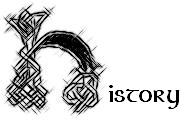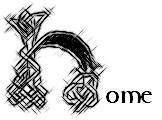
Vertical, end-blown flutes and whistles have been
around for hundreds of years in a myriad of different styles and
cultures. Many of these still exist today in pretty much their original
form, such as the Japanese Shakuhachi, the Middle-eastern Ney, the
Chinese Xiao, the Andean Quena and the Native American Flute, just to
name a few. All of these instruments, as well as the Irish Low whistle,
can probably trace their roots back to bone flutes found in
archaeological digs, some of which are thought to be up to 9,000 years
old. Filling in the "Family Tree" as it were from then to now would
likely be much more appropriate to a doctoral thesis, not to mention a
bit cumbersome for a website devoted solely to just a small branch from
said tree.
Luckily, the history (or genesis
if you will) of the Irish Low whistle as it is known today is a
relatively recent occurrence. Despite this however, portions of the
"story" have already started to take on their own mythology and legend,
which is really quite apropos for an instrument associated with the
mostly orally transmitted genre of Irish Traditional music. The direct
parent (to stick with the "family" motif) of the first Irish Low
whistle was actually an Indian (from India, not Native American)
whistle made from bamboo and purported to be tuned somewhere in the
realm of Ab and G, depending on who is telling the story. Said whistle
belonged to a legend in his own right, one Finbar Furey, member of the
Irish folk group, the Fureys. Mr. Furey states that he obtained the
whistle in question at "the Ideal Home Exhibition in Edinburgh in
1967", and that he played it for a year until "some redundant bloke sat
on it". (1) It is worth noting that sometime before it's untimely
demise by a British posterior (the dastardly deed was committed at a
pub in Coventry, England), Finbar used the whistle to record the
popular tune, "The Lonesome Boatman". Some speculate that a later
recorded version of this song was the first recording ever
to feature an Irish Low whistle. We must now pause for a moment
and reflect upon the small moments on which the tapestry of history
hangs, for if it were not for the carelessness of one now infamous
Englishman's rump, Mr. Furey might never have sought out the services
of the other gentleman credited with the birthing of the Irish Low
whistle, Mr. Bernard Overton.
When presented with the remains
of the bamboo whistle and asked if he could fix it, Bernard said no,
but that he thought he could copy it. (on a side note, Bernard Overton
is quoted as giving the date of this momentous moment as 1971, three
years later than Mr. Furey's accounting, but what's a few years between
friends?) Mr. Overton states that he first created a prototype from
copper tubing, but switched to aluminum due to tuning issues. This
first instrument was in A, but he then made another one for Finbar in G
so that he could play the aforementioned "Lonesome Boatman". Finbar was
so taken with the whistle he requested that Bernard
make him another one in D, arguably the most commonly used key in
Traditional Irish music. Mr. Overton referred to this whistle as a
"Tenor D Flageolet", (1) but it was later dubbed by musicians as "the
Low D", likely in reference to the smaller and better-known tin/penny
whistle, most commonly tuned to "high" D.
The rest is, as they
say...ah...history, which is the name of this section so I suppose I
should continue. Finbar proceeded to perform all over the globe, and
whenever he pulled out the new whistles, people inquired as to what
they were and where they could get one. Bernard Overton was
consequently bombarded with phone calls and requests for more whistles,
and thus was created the "Overton" brand, which would become the
standard by which all other low whistles were judged. But with a great
idea
and even greater demand comes not only imitators but innovators as
well.
Finbar later helped Brian Howard to create one of the first massed
produced low whistle, which are still made and available today.
Other makers such as Phil Hardy, Misha Somerville, Michael Burke and
numerous others (see
the makers section) have and continue to
put their own stamp on this unique instrument, while new virtuoso
players help push the bounds of what it can do.
Sadly, Bernard Overton passed away in
June of 2008, and as of August of 2009, Colin Goldie, his apprentice
and succesor, has ceased to make whistles under the Overton brand name.
Thankfully Colin continues to make whistles under his own name.
Please note that many of the "facts" stated above were collected third
or fourth hand and in some instances may be bordering on sheer
speculation. However, citations of reputable sources are given where appropriate.
(1) Steafan Hannigan & David Ledsam The Low Whistle Book (Loughborough:Sin E Publications 2000) 97
For an excellent video documentary on the Low whistle, click here.
